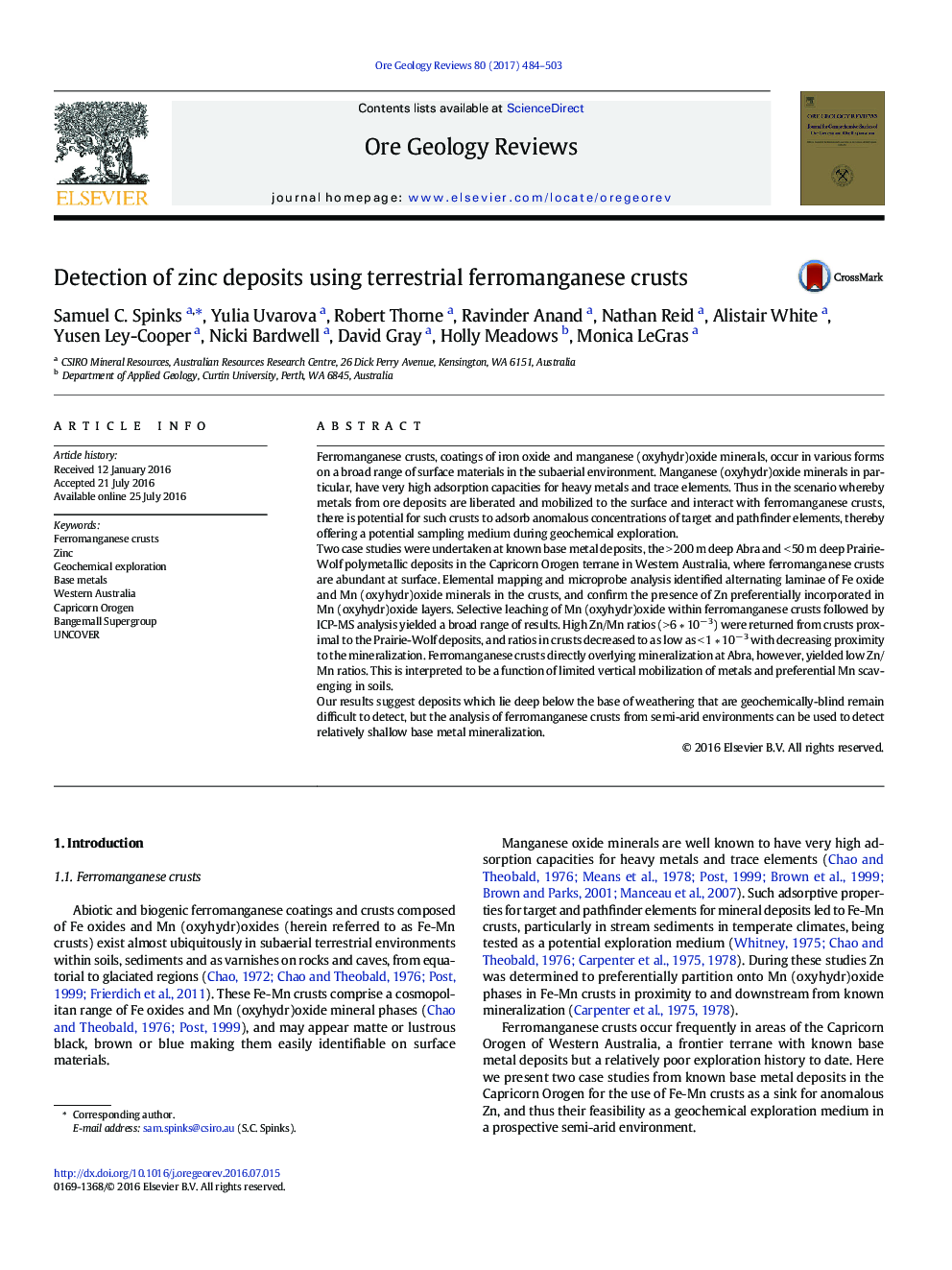| کد مقاله | کد نشریه | سال انتشار | مقاله انگلیسی | نسخه تمام متن |
|---|---|---|---|---|
| 6435625 | 1637226 | 2017 | 20 صفحه PDF | دانلود رایگان |
- Manganese (oxyhydr)oxide minerals are known to scavenge base metals.
- Ferromanganese crusts are widespread in semi-arid Western Australia.
- Ferromanganese crusts were sampled from 2 known zinc deposits.
- Selective leach and analysis of Mn oxide minerals in crusts show high Zn concentrations close to deposits.
- Findings have implications for geochemical exploration for Zn mineralization.
Ferromanganese crusts, coatings of iron oxide and manganese (oxyhydr)oxide minerals, occur in various forms on a broad range of surface materials in the subaerial environment. Manganese (oxyhydr)oxide minerals in particular, have very high adsorption capacities for heavy metals and trace elements. Thus in the scenario whereby metals from ore deposits are liberated and mobilized to the surface and interact with ferromanganese crusts, there is potential for such crusts to adsorb anomalous concentrations of target and pathfinder elements, thereby offering a potential sampling medium during geochemical exploration.Two case studies were undertaken at known base metal deposits, the > 200 m deep Abra and < 50 m deep Prairie-Wolf polymetallic deposits in the Capricorn Orogen terrane in Western Australia, where ferromanganese crusts are abundant at surface. Elemental mapping and microprobe analysis identified alternating laminae of Fe oxide and Mn (oxyhydr)oxide minerals in the crusts, and confirm the presence of Zn preferentially incorporated in Mn (oxyhydr)oxide layers. Selective leaching of Mn (oxyhydr)oxide within ferromanganese crusts followed by ICP-MS analysis yielded a broad range of results. High Zn/Mn ratios (> 6 â 10â 3) were returned from crusts proximal to the Prairie-Wolf deposits, and ratios in crusts decreased to as low as < 1 â 10â 3 with decreasing proximity to the mineralization. Ferromanganese crusts directly overlying mineralization at Abra, however, yielded low Zn/Mn ratios. This is interpreted to be a function of limited vertical mobilization of metals and preferential Mn scavenging in soils.Our results suggest deposits which lie deep below the base of weathering that are geochemically-blind remain difficult to detect, but the analysis of ferromanganese crusts from semi-arid environments can be used to detect relatively shallow base metal mineralization.
Journal: Ore Geology Reviews - Volume 80, January 2017, Pages 484-503
